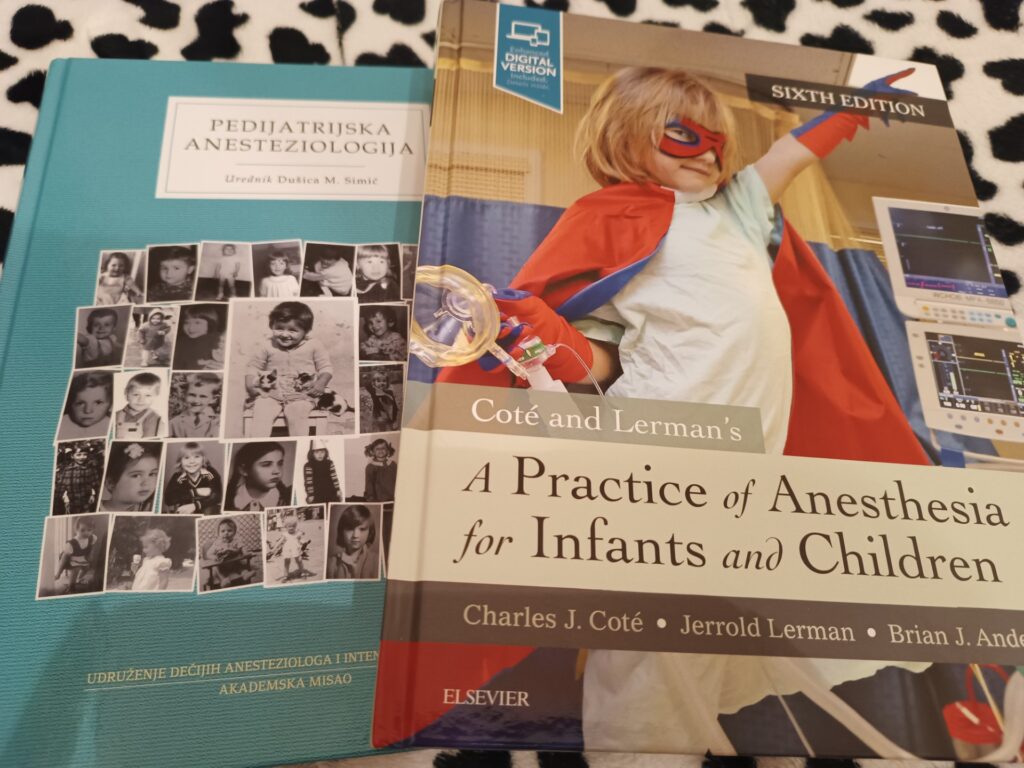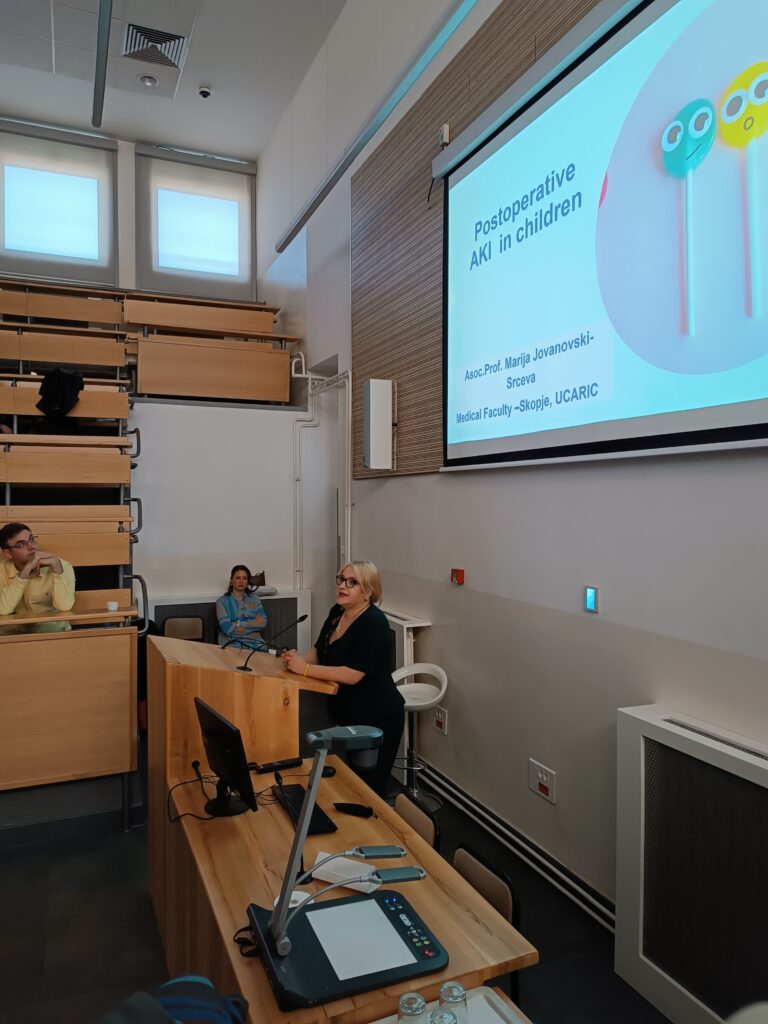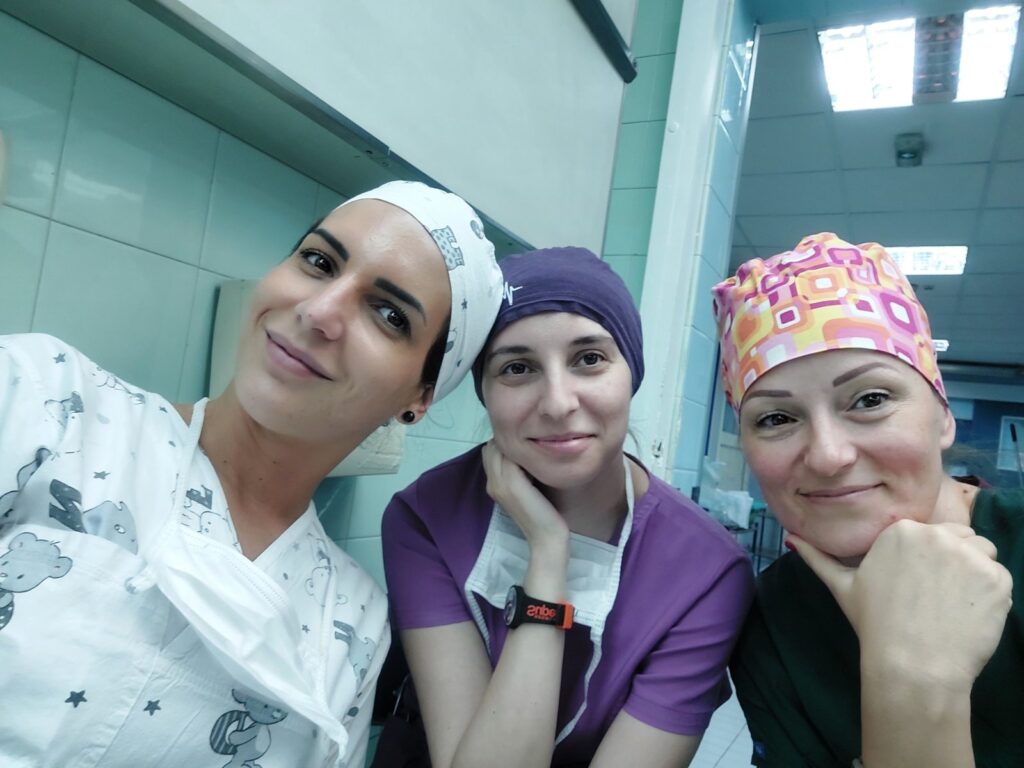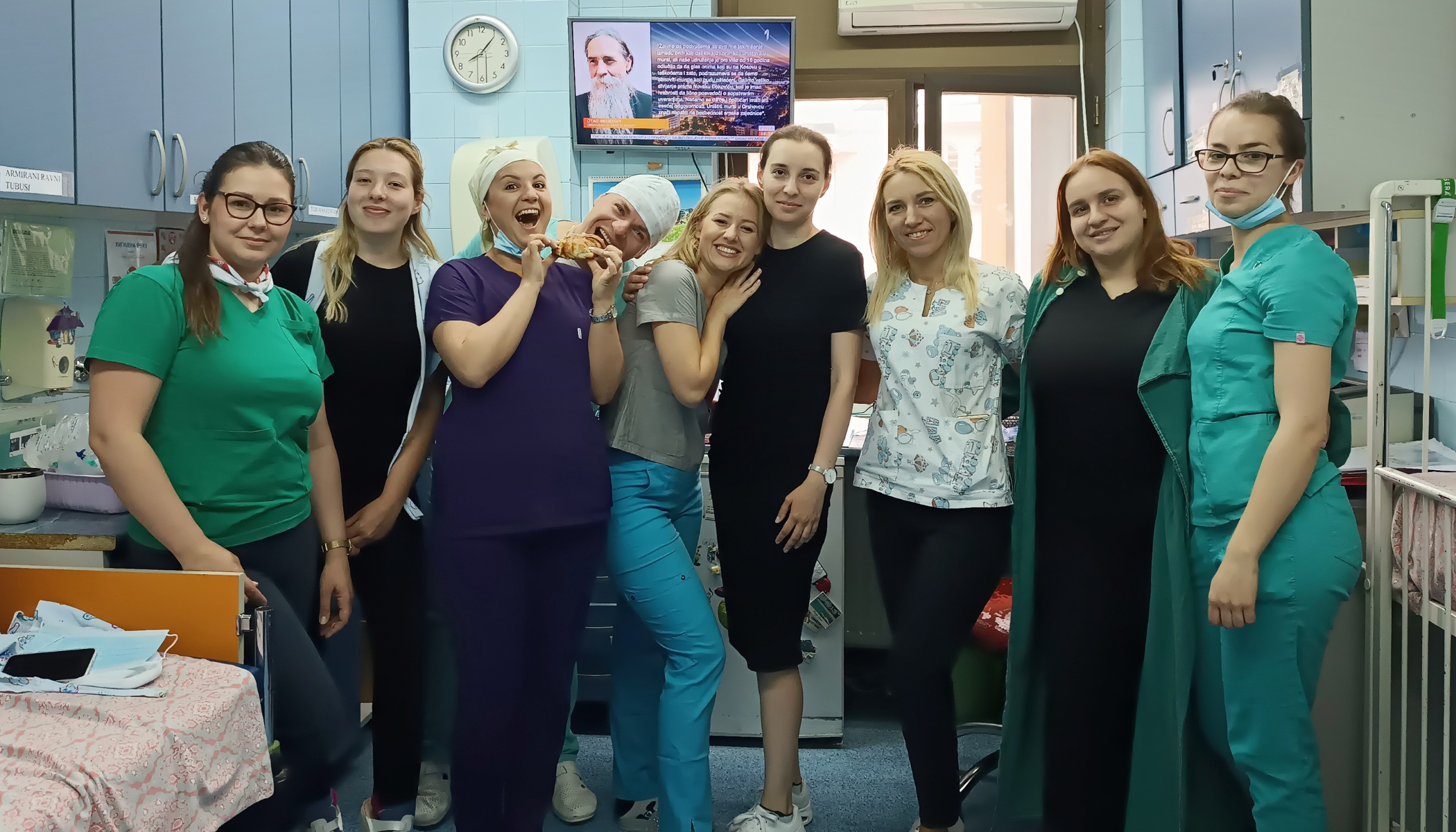We spoke to the Paediatric Anaesthesia fellow about training at the University of Belgrade
WFSA: Could you please introduce yourself for us?
Dr Burmuzoska: My name is Marjana Burmuzoska – I’m from Skopje, North Macedonia. At home, I work at the University Clinic for Traumatology, Orthopaedic Diseases, Anaesthesia, Reanimation, Intensive Care and Emergency Centre – Skopje. I started my training in 2013 and became an anaesthesiology and intensive care specialist in 2018.
I’m currently training on the two-month Paediatric Anaesthesia fellowship at Tirsova University Children’s Hospital in Belgrade, Serbia.
WFSA: Why were you interested in the fellowship?
Dr Burmuzoska: I heard about the Serbian Paediatric Fellowship opportunity from a colleague. It was an easy decision because of language, culture and a healthcare system similarities and I thought it was a great way to improve my knowledge and skills in paediatric anaesthesia.
The fellowship has been my unfulfilled dream since 2020, as the pandemic put a hold on things. When I heard it was restarting in Spring 2023, I was very happy.
WFSA: What was your first week like?
Dr Burmuzoska: Belgrade is most beautiful during April, but unfortunately not this one! On my first day at the hospital, there was very unusual snowy weather. But I met the staff and they showed me around and welcomed me for my two month stay – I was very well accepted by all colleagues.

I had the opportunity to ask and discuss on every topic. Professor Dusica Simic [Dr Burmuzoska’s Fellowship Head] had a very good welcome present for me – her paediatric anaesthesia book ‘Pedijatrijska Anesteziologija’ and Coté and Lerman’s book ‘A Practice of Anesthesia for Infants and Children.’ I spent all the rainy evenings reading and improving my knowledge.
I spent my first week in orthopaedic OR with Dr. Emil Bosnici and Dr.Vladimir Strajanac, they are truly regional anaesthesia experts. It seemed so easy when they were performing all the blocks, but it took me a few weeks to get familiar with the ultrasound, anatomy and sedation during it. But I was very satisfied when I did my first block by myself.
WFSA: What have you learned on your fellowship that you will apply back home?
Dr Burmuzoska: During the next few weeks I decided to spend more time in neurosurgery OR with Dr. Irina Milojevic. Even before my arrival on the fellowship, I was determined to learn about my two passions; regional anaesthesia and neurosurgery in children.
In the OR, I learnt about something that wasn’t available in my hospital, the TCI (Target Controlled Infusion) technique. TCI was something I’d only heard about at conferences and seeing it in-person, I was amazed at how stable neurosurgical patients were during this type of anaesthesia. During my stay in Belgrade, TCI pumps were purchased in my hospital and now it’s a technique that I’ll use for sure.
WFSA: How was your second month on the fellowship?
Dr Burmuzoska: May is a very special month in Tirsova because – as has been tradition for 15 years – the paediatric anaesthesia summer school takes place. There are lectures on many topics in paediatric anaesthesia, mainly experts from Balkan states but also other European speakers.
I really enjoyed all the talks, especially the lecture on Postoperative Acute Kidney Injury (AKI) in Children by my colleague Prof. Marija Srceva, from my hospital in Skopje.

During these two days there was also a Point-of-Care Ultrasound (POCUS) workshop, as well as one on peripheral nerve blocks which was very helpful. We also had a party at a traditional Serbian restaurant and had so much fun – the summer school is not all about studying and listening to lectures!
WFSA: Is there a particular case that stood out to you during your fellowship?
Dr Burmuzoska: A few days after the summer school we had one of the most demanding cases in the OR. It was a mediastinal tumour operated thoracoscopically in spontaneously breathing patient anesthetized with regional blocks.
This is a topic they had presented in the lectures but I was lucky to see how they actually do it in-person. There was an adrenaline rush and a special energy in the OR that day.
WFSA: How are you feeling now your two-month training is coming to an end?
Dr Burmuzoska: I’m in the last ten days and I’m already feeling a little sad that this experience will end soon. I’m grateful to every single doctor and nurse in Tirsova. They made these 60 days the best in my life and I learnt a lot from them.
I hope that I will return to Belgrade again, not just for the summer school next year, but for a few days in the hospital to see the new techniques and improvements they have implemented.

I will miss this wonderful team lead by Prof. Dusica Simic: Doc. Marija Stevic, Nevena Radovic, Irina Milojevic, Zorana Stankovic, Vladimir Strajanac, Emil Bosnici, Stefan Mijailovic, Ivana Petrov, Nina Ilic, Mirko Andjelic, Selena Puric, Nebojsha, Katarina Stancev. Finally, I would like to say thanks to WFSA for this opportunity.
The WFSA offers its Fellowships to anaesthesiologists from low and middle-income countries to increase their skillset and become leaders for anaesthesia once they return to their home countries. Upcoming WFSA fellowships and how to apply
Title image: Dr Marjana Burmuzoska (fourth from right) and colleagues during training at Tirsova






